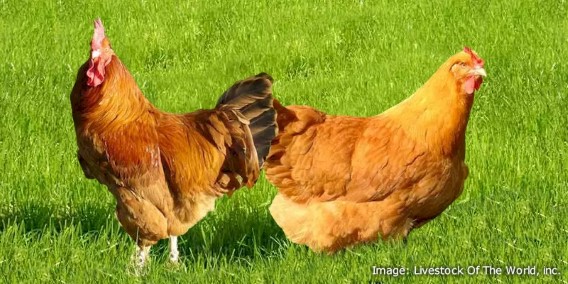Lincolnshire
Buff chickens were bred in significant numbers on Lincolnshire farms to supply
the London markets between the 1850’s and early 1900’s. The start of this trade
coincides with the development of the railway network that linked the small
market towns with the capital and its opportunities for business. Lincolnshire
Buffs were a fast growing, hardy bird that had excellent table qualities. At
the time, buff was a popular color for table birds since they provided white
table birds that when plucked left a clean carcass without leaving dark feather
stubs.
During the
1850’s, Dorking chickens were common on most farms and it is thought that Lincolnshire
Buffs were created from crosses between the recently imported buff Cochin, the
red Dorking, and other farmyard fowls of Old English Game / gold Hamburg
origins. The future of the Lincolnshire Buff looked promising until 1894 when William
Cook created the buff Orpington. There had been many buyers going to
Lincolnshire to select the specific shade and type of birds they wanted and
William Cook was already a large scale commercial breeder who had much success
with his black and white Orpingtons; he recognized the opportunity for a buff
variety. He always denied any relationship to the Lincolnshire Buff and when he
created his buff Orpington which became famous throughout the country and later
all over the World, there was some controversy. They may not look similar now
but when the buff Orpington was created, it was tighter feathered than the
birds of today, and much the same as some of the shades of Lincolnshire Buff
chickens that occurred in flocks.
By the turn
of the century, farmers could not sell Lincolnshire Buff for even half the
price of a buff Orpington. They declined rapidly in the early part of the
1900’s.
Lincolnshire
Buff chickens that we see today, were re-created, starting in 1981 at the
Lincolnshire College of Agriculture and Horticulture, Riseholme Small Animal
Unit. After government cut backs and changes in circumstances, the work was
continued by hobby breeders, most notably Brian Sands after 1986. Brian said
“With few remnants of Stock from Riseholme, and new infusions of Red Dorking
and Buff Cochin blood I made steady progress over the years, including
frequently displaying birds at the Lincolnshire agricultural show.” The Lincolnshire
Buff Poultry Society was formed in 1995. The breed had a standard drawn up,
based on old records of the breed and this was accepted by the Rare Poultry
Society in 1996. The Poultry Club of Great Britain accepted the breed standard
and the society in January 1997.

